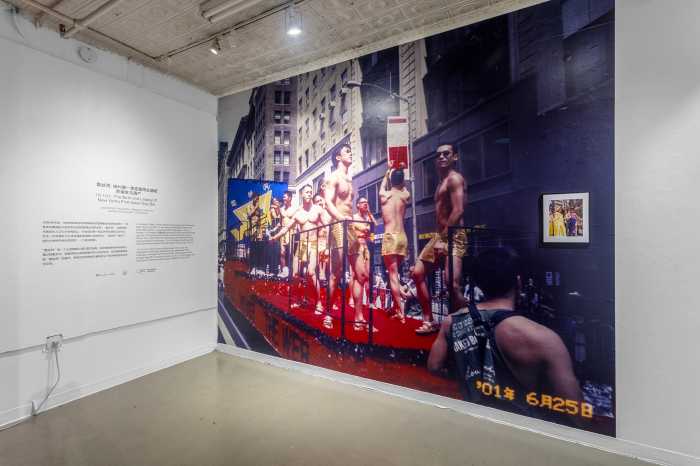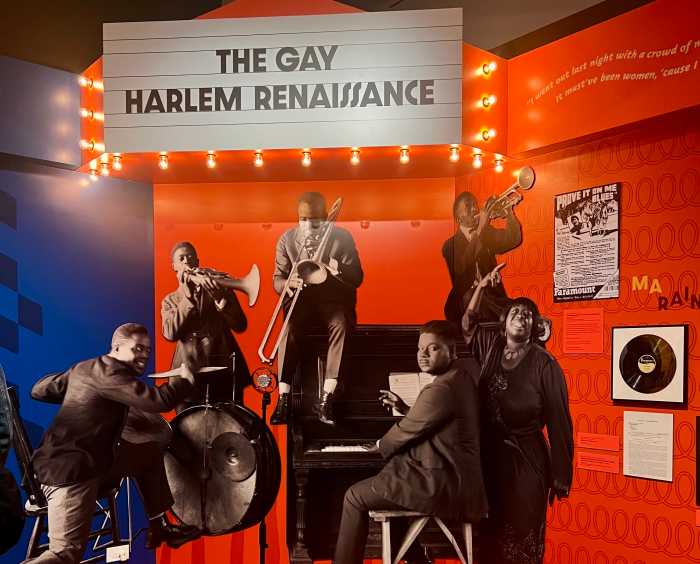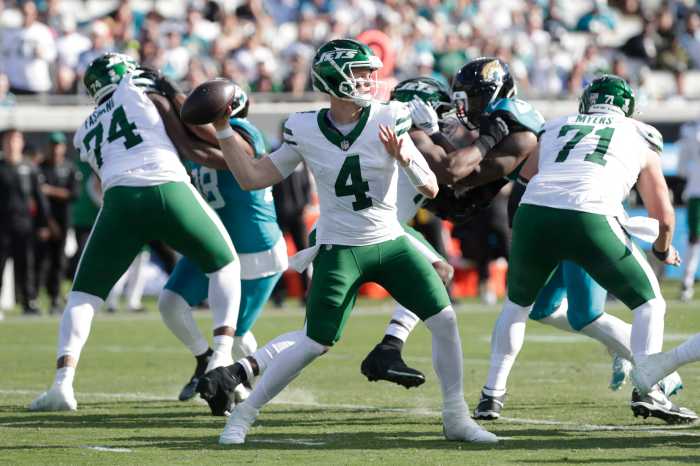Three fleeting art exhibits well worth your while
BY Stephanie Buhmann
“Edward Burtynsky: Oil”
Through November 28 at Hasted Hunt Kraeutler, 529 West 20th Street, 3rd Floor. Call 212-627-0006 or visit www.hastedhunt.com
This is Burtynsky’s first exhibition with his new representative gallery and the gallery’s first exhibition in its new home since taking over the space from Charles Cowles Gallery this summer (who used to represent Burtynsky until closing).
In the face of this occasion, it seems fitting that the exhibition features one of Burtynsky’s most acclaimed series (which explores the subject of oil). Like the still more prominent German photographer Andreas Gursky, this Canadian photographer has a wonderfully skilled eye for turning monumental scenes into complex compositions of utmost clarity.
In his work, mine tailings, quarries, scrap piles, or oil refineries, for example — which are incredibly elaborate in their structure and are guarantee of dense visual information — nevertheless appear orderly and are easily decipherable.
It is this clarity that allows for in-depth studies of Burtynsky’s various subjects. “Oil” includes a variety of motifs, which he has photographed in the course of several years. Burtynsky has traveled extensively to chronicle the production, distribution, and use of his subject. Refineries, oil fields, military airports and urban landscapes marked by dense urban traffic are themes within this series — and the installation succeeds in providing the audience with a solid overview. “Oil” stresses that the impact is global — a stunning, as well as frightening, document of nature’s destruction by humans.
Burtynsky’s work depicts subjects of human creation, but is usually devoid of any actual human physical presence. This causes an abstraction of the actual matter. Hence, refineries become autarchic organisms that seem to have sprung out of a science fiction novel; traffic grids turn into monstrous nerve systems; and fields filled with abandoned military jets or parked cars appear like snapshots of an abandoned planet.
While one could argue that Burtynsky is simply documenting his subject matter, his work makes plain that the demand for oil is boundless, the harvesting of oil is devastatingly destructive, and its consumption is out of control. Despite the formal beauty found in this body of work, its content is nothing if not disturbing.
“Time Eitel: Invisible Forces”
Through December 5 at PaceWildenstein, 545 West 22nd Street. Call 212-989-4258 or visit www.pacewildenstein.com
In his second solo exhibition with this gallery, the German figurative painter Tim Eitel continues to fuse images of everyday life with print and film media references. In contrast to the much-celebrated members of the Leipzig School — Germany’s most prominent grouping of younger generation figurative painters — Eitel’s aesthetic is closer to the Belgian painters Michaël Borremans or Luc Tuymans.
His style at times can evoke Vermeer’s use of light and Morandi’s serenity. Though his technique is rooted in Realism, his recent compositions have become increasingly abstracted. Emotionally evocative, Eitel’s compositions translate as faint memories and seem to tell of the disconnection between reality and our imagination.
Captured in a somber palette, Eitel’s images contain a sense of timelessness — rooted somewhere between being shadows of things past and meditations of things to come.
In these metaphysical spaces, Eitel places anonymous protagonists whose gestures and poses offer the only insight into their existential and emotional state. They are stand-ins for the sake of contemplation, a technique frequently employed by the German Romantic painter Caspar David Friedrich. Friedrich set his figures into vast landscapes, often having them turn their backs to the viewer while in contemplation of the sublime in nature. Eitel’s figures are not turned away from us, but are often found with their faces disguised by hoods, a raised arm or while leaning over, hanging their heads low.
As in the case of Friedrich, the interaction between figure and viewer is not mutual, as we are observing them. We are witnessing them as they are contemplating or are beaten by the world that surrounds them. The source of the works in “Invisible Study” is a group of photographs that Eitel took of his surroundings, in particular of urban street scenes. Through the act of painting, he isolated distinct pictorial elements from the photographs — contrasting them with large color planes.
While some of these images address the notions of motion and change, their translation into painting leaves them distilled and frozen. Subjects that are often overlooked in the fast-paced urban environment — such as a Morandi-esque still life of a pile of clothes on a cement floor or the depiction of two crows picking on a dead bird — become centers of attention; and Eitel enables (if not forces) us to take our time with them.
Liu Ye: Leave Me in the Dark
Through December 19 at Sperone Westwater, 415 West 13th Street. Call 212-999-7337 or visit
Most of the paintings in “Leave Me in the dark” feature a singular young woman — but instead of containing sexual overtones (a characteristic that defined many of this Chinese artist’s previous works), the women are now engaged in rather simple activities. They are depicted while reading, embarking on a journey with suitcase in hand, or while playing with colored wood blocks.
Their features, clothes and the occasional prop are simplified in the fashion of children’s book illustrations, and starkly contrasted with mostly monochromatic backgrounds. They are engulfed by shades of grey, blue, and brown, establishing an atmosphere that is as melancholic as it is mysterious.
There is a certain kitschy “cuteness” in these images, a quality much more evident in Liu Ye’s older paintings of the girl rabbit Miffy, a picture book character created by the Dutch illustrator Dick Bruna. But here, it is offset by the sense of forlornness that Liu Ye tries to bestow upon his subjects.
The experience of Liu Ye’s work is two-fold. On the one hand, we are offered a narrative reading of the work. In each case, we are introduced to an individual, whose story albeit unknown, provokes our imagination. Her isolation and the various objects and details that surround her provoke questions of her intentions, experiences, and longings. We are unclear of her whereabouts, her place of origin and aspired destination. She is lost in time as well as in the world, and it is the viewer’s engagement with her that creates the only link to reality.
On the other hand, Liu Ye’s work translates as a persistent study of form and color nuances. This is due to the consistency of the artist’s vocabulary. Each composition is defined by a similar structure, which features a central figure.
Another consistency is Liu Ye’s choice of a subdued palette, which he employs for the large color fields that surrounds the figure. All works share a sense of tranquility and meditative silence. Much is left unsaid here and only hinted at.
Liu Ye was born in Beijing in 1964 and came of age during the Cultural Revolution when art was at the service of the state and individual expression was explicitly forbidden. His father was a children’s book author. Both these facts shed light on his style, as well as his restraint. This body of work is based on the idea of simplification and it is in its nuances that it unfolds fully.


































